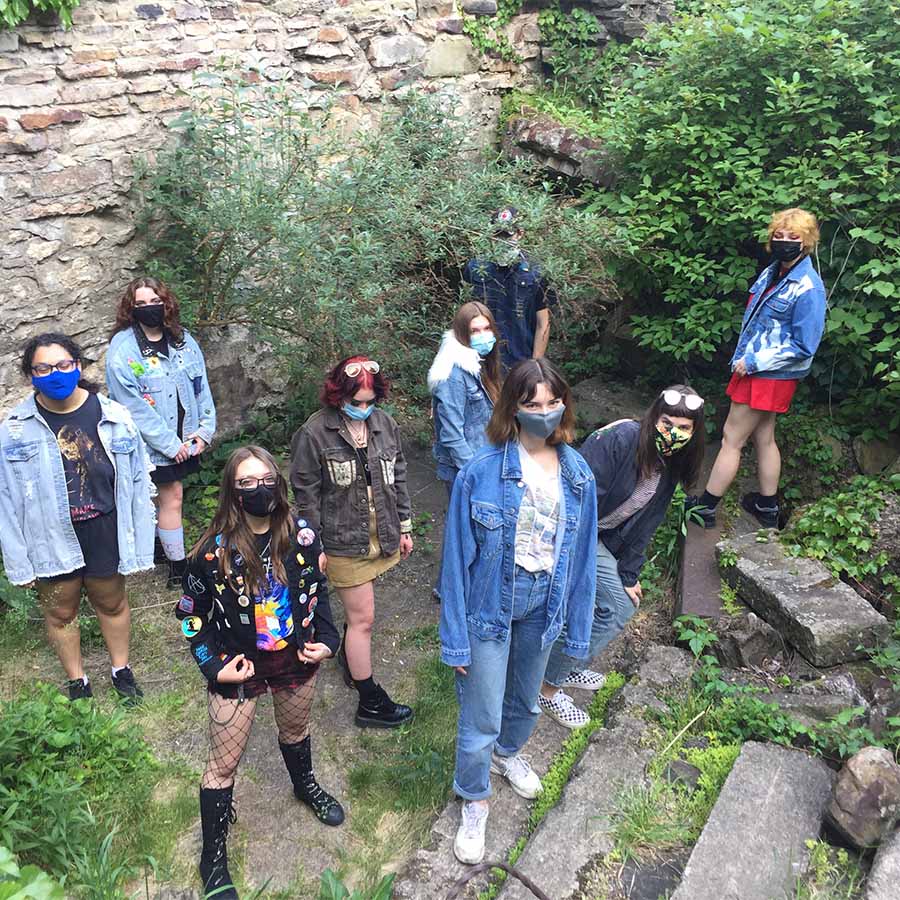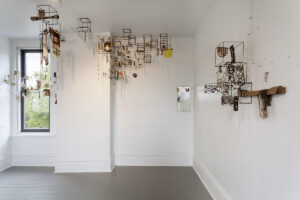This play is a reflection on the (im)possibility of accepting diversity and the other. The fragmented body of the neoplasm—the fruit of unstable conditions—overcomes barriers, loves and denies itself and others, wanders around, forgetting its profession. It frequently and with pleasure divides, goes through dangerous palpation, questions the possibility of contact with the experience of the other. Poorly brought up but very successful, it invites us to a trans-species transition.
Lorem ipsum dolor sit amet, consectetur adipiscing elit. Fusce at elit quis felis ullamcorper vehicula non in est. Maecenas finibus pharetra justo et faucibus. Nulla eu tortor vel ex volutpat efficitur. Vivamus placerat turpis in aliquet venenatis. Quisque ac lacinia mauris. Nam quis lobortis elit. Vestibulum sagittis nisi sit amet euismod hendrerit. Mauris non sodales odio. Donec efficitur molestie quam, sed lobortis massa vestibulum ut.
Nunc at arcu sodales nisi porta euismod non vel neque. Phasellus at lobortis ante, in suscipit justo. Proin non purus vitae nisi molestie consectetur. Vestibulum volutpat lobortis interdum. Vestibulum pretium ligula lorem, egestas ultricies lectus ultricies ac. Curabitur venenatis vulputate dolor.
Living Things contains furniture of a possible and not-too-distant future where the symbiosis between human beings and microorganisms is externalized and celebrated in the built environment. Microalgae are some of the most ancient and prolific organisms on earth. They are single-celled proto-plants without roots, stalks, or leaves. Despite accounting for less than 1% of the Earth's total biomass, microalgae drive the biological pump, which maintains our atmosphere and the balance of carboniferous matter therein. The energy-dense and nutrient-rich material left behind by these microorganisms remains an almost entirely untapped renewable resource by humans.
We have begun to harness the power of other microorganisms in industries such as waste management, alcoholic beverage production, agriculture, medicine, and more recently biofuels. Microalgae, however, presents a unique opportunity for designers. The absence of a superstructure to organize their anatomy allows the liquid suspension in which they live to be treated more like a material than a plant. In the hands of an architect, industrial designer, engineer, or systems designer this liquid plan becomes a living material, which can be integrated symbiotically into the architectural environment. The plasticity of this living material allows us to create living structures. These living structures recycle lights, heat, and carbon dioxide from buildings and their inhabitants into rich green biomass that can be consumed as sustenance, used as agricultural fertilizer, or converted to biofuel.
This installation reveals the phenomenological qualities of the highly beneficial micro-algae and challenges visitors to consider what the future of the domestic environment may become in the context of the precarious agricultural and energy needs of a ballooning population.
How do people in a home cohabitate with microorganisms? Do you treat them as a pet, a houseplant, an appliance, furniture, or something completely unique? Through an installation of domestic vignettes in which Spirulina algae are cultivated in custom glass bioreactors designed as household furnishings, Living Things creates a symbiotic environment between people and microorganisms.
The three vignettes - a living room, a dining room, and a kitchen/control center - each espouse a different character, and the living vessels function differently in each space. The morphologies of hand-blown glass vessels function both as lighting and heating elements for the human occupants, and high-functioning photobioreactors which provide heat, light, agitation, air supply, nutrient, and waste control to the living algae inside. This life support system is connected through just under 1/2 mile of wiring and plumbing to a hybrid between a scientific workstation and a media cabinet. At this workstation, each of the nine vessel's life support systems can be adjusted individually. The 3D printed nylon knobs embedded in the surface of this workstation actuate eighteen valves which allow for the harvesting of Spirulina when the culture becomes dense enough, and the supply of fresh liquid media to each vessel. Inside the cabinet the pumps, tubing, manifolds, LED drivers, air pumps, heater connections, and filters which comprise the heart of the life support system.
The microorganism Spirulina was selected for the installation for its ability to thrive in very alkaline waters, where most bacteria cannot live. As the algae grow very quickly the character of each vessel changes continuously. The liquid becomes a deeper richer green and absorbs more and more light from the internally lit vessels. Individual Spirulina filaments are 1/3 of a millimeter long and are just barely visible to the naked eye; here they can be seen mixing inside the glass vessel. Once filtered, the algae can be dried from a viscous paste into a fine, green powder, which is over 60% protein by weight and is mostly flavorless with a hint of grassiness. During the course of the installation, the artists and museum will work with bartenders and chefs to create drinks and dishes that feature Spirulina at special events held in the installation.
Exhibition
Jacob Douenias (American, b. 1991) graduated from Carnegie Mellon University's School of Architecture. He is an architectural designer who has been exploring systems design and integration through the use of biological materials. Since graduating he has worked on responsive building technologies that operate in accordance with the biologic condition of homeostasis.
Ethan Frier (American, b. 1991) grew up in Baltimore, MD, and is a graduate of Carnegie Mellon University's School of Design. He is an industrial designer and entrepreneur interested in the intersection of design, technology, and culture. He is a generalist when it comes to design and fabrication, but particularly enjoys building disruptive hardware and integrated technology for the near future.









